I’ve recently been approached by several natural deodorant companies to talk about the health risks of aluminium-containing antiperspirants. As much as I’d like that sweet sweet cheque… I can’t. Because the science just isn’t there.
So instead, I’m going to debunk the aluminium scaremongering.
(Note to deodorant companies: There are valid reasons to switch to natural deodorants. Aluminium ingredients can be irritating for a lot of people, especially on sensitive underarm skin. I personally don’t like the smell of most commercial deodorants, and many people agree with me here. But promoting commercially convenient misinformation and exploiting your customers’ fears is a dick move.)
Video is here on YouTube, keep scrolling for the written version…
Why is aluminium in antiperspirants?
Aluminium-containing compounds like aluminium chlorohydrate are the active ingredients in antiperspirants. They interact with water to form a plug that blocks off the sweat gland, stopping sweat from coming out (this plug comes out naturally later when your skin cells shed off). This keeps your armpits dry, and since sweat contains the chemicals that will eventually turn into odour, that’s a good thing. Sweat also keeps the area damp which encourages bacterial growth.
Related post: Chemical Exfoliants as Deodorant? The Science of Smelly Armpits
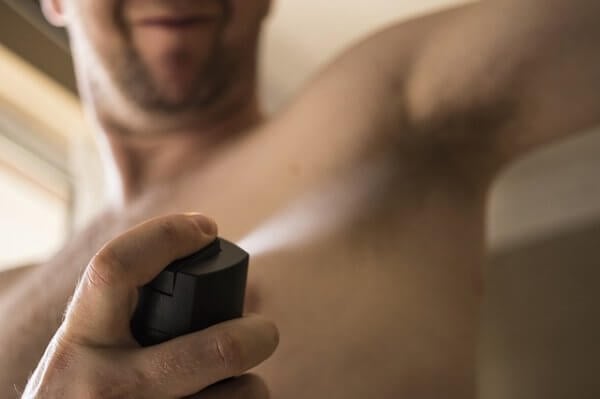
Aluminium and breast cancer
There are a number of reasons people give for why aluminium is harmful. The scariest one is that it’s supposedly linked to breast cancer. But pretty much all reputable sources say that there’s no link:
“There is no evidence that the use of antiperspirants increases your risk for breast cancer… there is no link between aluminum and breast cancer risk.” – Canadian Cancer Society
“There are no strong epidemiologic studies in the medical literature that link breast cancer risk and antiperspirant use, and very little scientific evidence to support this claim.” – American Cancer Society
“There is no good evidence that aluminium in deodorants could increase the risk of cancer in animals or humans.” – Cancer Research UK
“No scientific evidence links the use of these products to the development of breast cancer. No studies to date have confirmed any substantial adverse effects of aluminum that could contribute to increased breast cancer risks.” – National Cancer Institute
The European Commission’s Scientific Committee on Consumer Safety recently (October 2019) reviewed the evidence on aluminium ingredients, and again concluded that they were safe in the amounts allowed in cosmetics (6.25% in non-spray antiperspirants and 10.60% in spray antiperspirants).
Reviews from 2017, 2014 and 2008 found no clear evidence to show that aluminium in antiperspirants increases the risk of breast cancer. The 2008 review even concluded:
“After analysis of the available literature on the subject, no scientific evidence to support the hypothesis was identified and no validated hypothesis appears likely to open the way to interesting avenues of research.” (translated from French)
It generally takes a lot for scientists to state a negative, or to straight up say that further research would be a waste of time (!!), so these statements are pretty strong! So where did this myth come from, and why does it keep persisting?
If you’ve been following any ingredient fearmongering in beauty, you’ll have come across this series of events many times before:
- In vitro results suggest a possible link
- The conditions in the in vitro studies didn’t reflect reality
- People ran with it anyway
- Large scale population studies didn’t find a link, but no one cares anymore because DON’T YOU WANT TO AVOID CANCER?
Evidence for aluminium causing breast cancer
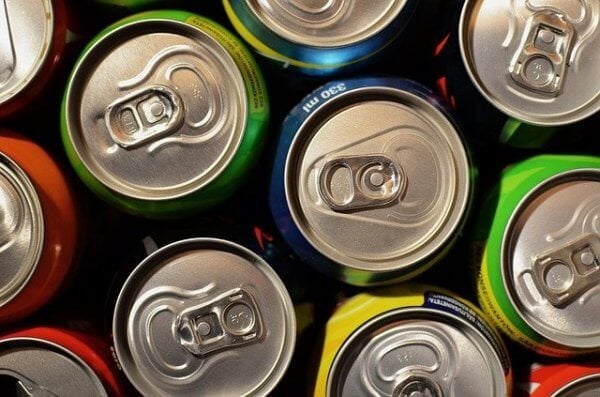
Here’s the evidence for aluminium being linked to breast cancer.
Breast cancer tumours are frequently near the armpit
Breast cancer tumours are mostly found in the upper outer quadrant of the breast, near the armpit. This led to the idea that perhaps the use of deodorants in the armpit could be linked to breast cancer.
Alternative explanation: There’s also a lot more breast tissue in the upper outer quadrant. More tissue means more cells, so higher potential for tumours to form.
Aluminium has effects in cell studies in vitro
Some in vitro studies have found that aluminium could affect how estrogen receptors function. Since the hormone estrogen can speed up the growth of breast cancer cells, this can be interpreted as evidence that aluminium could be linked to breast cancer. Aluminium has also been found to cause DNA damage to cells.
There are also a lot of reasons why the in vitro studies don’t translate to what happens when you actually use antiperspirant deodorants on your skin.
For aluminium to have these effects, it would have to be absorbed into skin at a high enough concentration. However, aluminium chlorohydrate doesn’t absorb well into skin at all, with only 0.012% of the applied amount absorbed through skin. Most of our exposure to aluminium is actually through our diet. It’s estimated that the amount absorbed from antiperspirants would be about 2.5% of the amount normally absorbed from food over the same time period – which would not be a significant increase.
The study that found aluminium-related DNA damage used extremely high aluminium concentrations (much higher than cells would be exposed to in the body, even with aluminium-containing deodorant use), and standard assays found that aluminium didn’t cause cancer-related mutations.
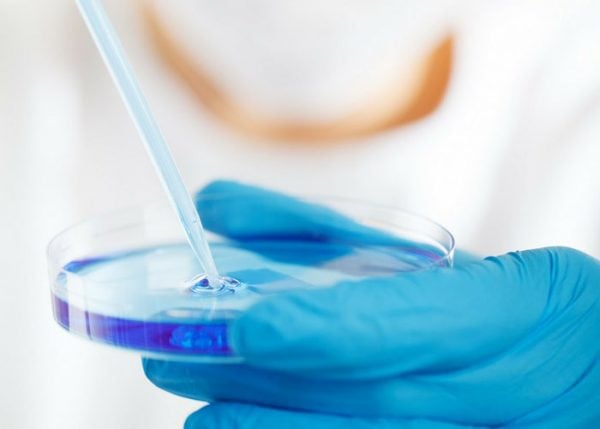
Aluminium is higher in breast cancer tissue… sometimes
Studies have found that there’s higher aluminium in breast cancer tissues, but other studies have found no association.
- In a widely publicised 2007 study, aluminium was found in breast cancer tissue from 17 patients, and it was slightly higher in the outer region (although there was a lot of variation between samples), but aluminium wasn’t measured in breast tissue from people without cancer, nor in other parts of the body.
- A 2011 study found higher aluminium concentrations in nipple aspirate from 19 women with breast cancer than 16 women without.
- A 2013 study looked at breast tissue from 176 people with breast cancer, and found no difference in aluminium concentrations between tumours and the surrounding normal tissue.
Other scientists have suggested that breast cancer tumours simply collect more aluminium than normal tissue.
What do human studies tell us?
The best way of checking if one thing causes another thing in humans is… to look at actual humans. Lots of them.
- A 2002 study compared 813 women with breast cancer and 793 without, and found that there was no link between breast cancer and the use of antiperspirants or deodorants.
- A 2003 study looked at 437 questionnaires from women with breast cancer, and found that women who said they used antiperspirant and deodorant more and shaved their armpits more had an earlier age of diagnosis than those who did not. However, other experts have pointed out some methodological problems with this study that limit how the results should be interpreted, e.g. it didn’t look at the usage of women without breast cancer. The study could just be saying that women who use a lot of deodorant tend to be younger.
- A 2006 study compared 54 women with breast cancer and 50 women without, and found that there was no increased use of antiperspirants in the women with breast cancer (although there was an association with family history and use of oral contraceptives).
So based on this evidence, it really doesn’t seem like there’s much of a link between aluminium-containing antiperspirant deodorants and breast cancer in humans, with real-world usage.
Why is the breast cancer-aluminium link so persistent?
A number of cancer institutions and experts have pointed out that it’s one specific research group that continues to research the link between aluminium and breast cancer, despite other scientists repeatedly finding that the evidence for this link is pretty darn unconvincing, to the point where it’s not worth investing resources into studying it further.
This group is the Darbre group, which you may remember as the people who started the fearmongering about parabens with a very flawed study. Their publications on the topic continue to emphasise the in vitro evidence despite the fact that other studies strongly indicate that the in vitro studies have no relevance to what happens in living organisms.
It’s difficult to give the aluminium-breast cancer theory a generous interpretation – there’s often glaring issues with experimental design with the studies that claim a link, as discussed before with parabens. If you study something enough, you will undoubtedly find correlations to support your case. Pool drownings correlate with Nicholas Cage’s film output, after all.
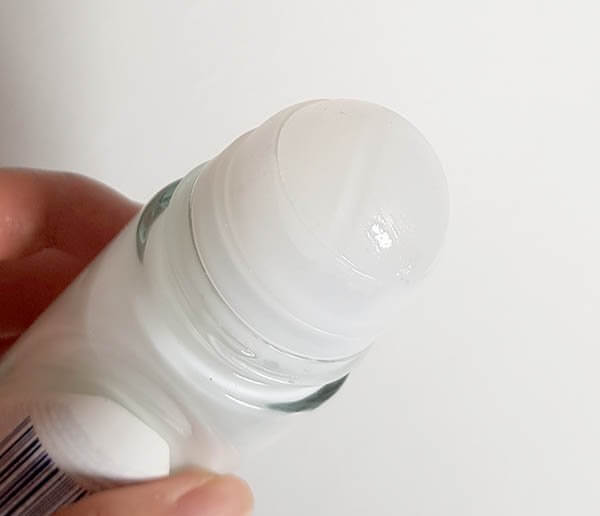
It’s comforting to think that we can be entirely in control of our own fates when it comes to disease. The unfortunate reality is that a lot of the time it’s arbitrary, or out of our control.
It’s impossible to say what actually caused a particular case of cancer, and not very helpful either. Many people who have all the risk factors for a particular cancer never develop it (we all know someone who smoked their entire life and never got lung cancer). But it can be useful to know the risk factors, especially so you can know how to improve your chances against cancer.
Breast cancer risk is mostly associated with factors largely outside of our control, such as:
- being female
- being older
- being Caucasian
- having a family history of breast cancer
- certain genetic factors (e.g. BRCA1 and BRCA2 gene mutations)
- menstruating before age 12
- undergoing menopause after age 55
- never having given birth
- being older when you have your first child
- having dense breast tissue
There are some environmental and lifestyle factors that can also increase breast cancer risk, and are more within our control:
- sedentary lifestyle (not exercising much)
- poor diet
- drinking alcohol
- being overweight or obese
- ionising radiation in the chest area
- taking hormone replacement therapy
These lifestyle factors are generally harder to change than switching to an aluminium-free antiperspirant – so the narrative that a simple change can significantly help us against the scary prospect of cancer is incredibly alluring, even if the scientific evidence really doesn’t add up. And unfortunately, this convenient lie can make us complacent, and discourage us from taking the more difficult steps to act on the factors that have actually been found make a difference.
(Has this just turned into a rant? Possibly.)
Other myths about aluminium
There are a few other reasons people give for avoiding antiperspirants, but here’s the reality:
Not sweating is fine
One myth is that because antiperspirants block sweat, they can prevent your body from getting rid of toxins. But:
- Your body gets rid of toxins mostly through your kidneys (through pee) and liver (through poop). Sweat plays an incredibly minor role.
- The main function of sweat is to cool you down, not to get rid of toxins.
- You’re sweating on the rest of your body anyway.
Sometimes this myth also involves talk of blocking lymph nodes in the armpit from clearing toxins, even though lymph nodes aren’t connected to sweat glands.
Who should avoid aluminium?
There are a few valid reasons for avoiding aluminium:
- If your skin is sensitive to aluminium (e.g. they cause a rash), you should avoid products containing aluminium.
- If sweat isn’t a problem for you, you shouldn’t use aluminium-containing antiperspirants.
- If antiperspirants aren’t enough for you, you might want to use other sweat-blocking treatments like botox instead.
- If you have extremely poor kidney function, you might want to avoid any extra aluminium.
- If you’re about to go for a breast cancer screen (mammogram), doctors tell you to avoid aluminium since it can show up on the images and confuse results. This is NOT because of any health risk from aluminium!
References
Commentary
I’d recommend reading these first – most are open access and written in plain language.
American Cancer Society, Antiperspirants and breast cancer risk, 14 Oct 2014.
NIH National Cancer Institute, Antiperspirants/deodorants and breast cancer, 9 Aug 2016.
Cancer Research UK, Causes of cancer: Cosmetics and toiletries, 13 Mar 2017.
Canadian Cancer Society, Do antiperspirants cause breast cancer?, accessed 26 Feb 2020.
Cancer Council Western Australia, CancerMyths: Deodorant and cancer, Jul 2015.
Scowcroft H, Cancer Research UK, Breast cancer & deodorants (or The ‘No Links’ Effect), 31 Aug 2007.
European Commission Scientific Committee on Consumer Safety, Opinion on the safety of aluminium in cosmetic products: Submission II, 31 Oct 2019.
Gorski D, Science-Based Medicine, Breast cancer myths: No, antiperspirants do not cause breast cancer, 6 Oct 2014.
Surendran A, Studies linking breast cancer to deodorants smell rotten, experts say, Nat Med. 2004, 10, 216. DOI: 10.1038/nm0304-216b
National Breast Cancer Foundation, About breast cancer: Risk factors, accessed 26 Feb 2020.
Reviews
These are scholarly reviews, if you want more of the technical details.
Klotz K et al., The health effects of aluminum exposure (open access), Dtsch Arztebl Int. 2017, 114, 653–659. DOI: 10.3238/arztebl.2017.0653
Willhite CC et al., Systematic review of potential health risks posed by pharmaceutical, occupational and consumer exposures to metallic and nanoscale aluminum, aluminum oxides, aluminum hydroxide and its soluble salts (open access), Crit Rev Toxicol. 2014, 44 Suppl 4, 1-80. DOI: 10.3109/10408444.2014.934439
Namer M et al., [The use of deodorants/antiperspirants does not constitute a risk factor for breast cancer] (article in French, open access), Bull Cancer. 2008, 95, 871-80. DOI: 10.1684/bdc.2008.0679
Darbre PD, Mannello F & Exley C, Aluminium and breast cancer: Sources of exposure, tissue measurements and mechanisms of toxicological actions on breast biology, J Inorg Biochem. 2013, 128, 257-61. DOI: 10.1016/j.jinorgbio.2013.07.005
Note: The in vitro studies are summarised in the above reviews.
Human Population Studies
These are the primary studies done on human beings. Since it’s unethical to treat humans with something potentially carcinogenic, these are analyses of the habits of people who have or haven’t been diagnosed with breast cancer.
Mirick DK, Davis S & Thomas DB, Antiperspirant use and the risk of breast cancer, J Natl Cancer Inst. 2002, 94, 1578-80. DOI: 10.1093/jnci/94.20.1578
McGrath KG, An earlier age of breast cancer diagnosis related to more frequent use of antiperspirants/deodorants and underarm shaving, Eur J Cancer Prev. 2003, 12, 479-85. DOI: 10.1097/00008469-200312000-00006
Fakri S, Al-Azzawi A & Al-Tawil N, Antiperspirant use as a risk factor for breast cancer in Iraq (open access), East Mediterr Health J. 2006, 12, 478-82.
Human Tissue Studies
These are the primary studies done on samples of tissue or bodily fluids from people with breast cancer.
Rodrigues-Peres RM et al., Aluminum concentrations in central and peripheral areas of malignant breast lesions do not differ from those in normal breast tissues (open access), BMC Cancer. 2013, 13, 104. DOI: 10.1186/1471-2407-13-104
Mannello F et al., Analysis of aluminium content and iron homeostasis in nipple aspirate fluids from healthy women and breast cancer-affected patients, J Appl Toxicol. 2011, 31, 262-9. DOI: 10.1002/jat.1641
Exley C et al., Aluminium in human breast tissue, J Inorg Biochem. 2007, 101, 1344-6. DOI: 10.1016/j.jinorgbio.2007.06.005


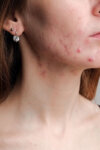
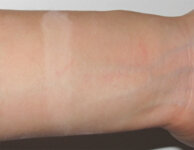

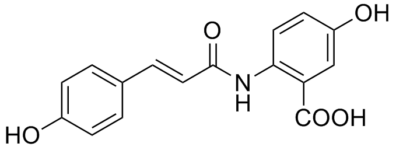
What a humane, truthful and wonderful piece, thank you 🙂
Urgh it’s so easy to get caught up in misinformation. Thank you so much for the effort you put into your articles. I’m so over trying a hundred ‘natural’ deoderants that don’t work…back to good old aluminium for me!
Great article Michelle!
Now let’s get on to which work best, are best on the skin, don’t stain clothes, come in most environmentally friendly packaging that also looks good, smell good – all the other things we look for in skincare and cosmetics.
I’m in Florida and have a non aluminum deodorant version that’s more like a luxury beauty product that I love in the cooler months. But in 90F+ weather in the summer, I need something more like an antiperspirant, too. Would love to find similar to my cool weather version.
Nice article.. I heard this runmour initially from my auntie who was a nurse all her working life.. think it was just a hunch she had though.
My question is.. you mention many of the cancer charities as leading examples of this statement about aluminium not being true. If these organisations had our best interests at heart why are they not talking about and offering the types of treatments for cancer that are available from oncology hospitals littering the American border in Mexico ?
I know people who have been treated at these hospitals and their lives transformed. Yet anytime I see a documentary on British TV with various organisations talking about cancer treatment developments there is not a word mentioned. Can we trust these organisations..?
I think a lot of that probably has to do with the fact that in the US medical treatments have to undergo FDA licensing. What type of treatments are you speaking about specifically?
This was a very thorough examination of this issue and clear explanation of the results of the current studies. Can you please comment on the studies looking at the relationship between aluminum and Alzheimer’s? Thank you! You’re the best! ?
When I was in my late 20’s (I’m now 65) I developed large, painful welts in my armpit that scared the stuffing out of me. I went to the doctor and she said it was deodorant and I’d just have to stop using it which frankly appalled me – what was I going to do now?!
She said, “Just wash your armpits with an antibacterial cleanser and you’ll be fine.
I was working in a hospital so I used the cleanser readily available there and it seemed to work just fine. I had to hope it did! A few years later into my early 30’s I was living in SF and discovered a crystal deodorant which worked great and I’ve been using a variation of this ever since. Once I challenged this theory and while in the Body Shop one day thought I was just try it on my hand (the Body Shop is known for it’s “natural skin care”) and a welt started forming immediately. A sales clerk dashed off to get me some cleanser to get it off right away. I’m sure it’s the aluminum that sets off my alergic reaction. As soon as I had this problem, however everyone in my family stopped using deodorant for fear this signaled a general problem with the product.
As always I found your article so interesting!
@Kathleen – Natural crystal deodorants contain lots of alunimum. So while you were “sure” that aluminum set off that allergic reaction, you were probably wrong. Apparently you used aluminum for years without noticing problems.
I love science.
Thank you so, so much for this article!!! I know people who have been hounding me to “switch over to natural deodorant for my own health” for so long and now I can share this article with them!
Don’t stop doing what you’re doing!!
Since my mom passed from cancer without an answer for “why”, reading this was a tough exercise in allaying fears. Honestly, it took a couple efforts to read.
Cancer is really traumatic to witness, so setting aside such info can feel like a trust fall even when you know it’s fact based. Perhaps because the aluminum fear reminds me of Romans and lead poisoning. Dunno!
It’ll take a sec for it to fully absorb as it’s been a fear for so long. But I hear your research + really value the time consuming effort to gather citations – that definitely helps a lot in efforts to release hold on a fear.
Excellent article. Thank you
Thanks again for the wonderful article, and for not taking the sweet sweat check.
Thank you for putting this information out there, I’m sure it took ages! You put an end to uninformed fearmongering, althought I’m sure there will be plenty of unbelievers (antivaxxers and flat earth types).
Thank you for this blog post! I had actually been hoping you would do a post on this! Really balanced and interesting discussion, I really like the way you presented the research. Thank you.
Excellently argued!
Thank you!!!
“And unfortunately, this convenient lie can make us complacent, and discourage us from taking the more difficult steps to act on the factors that have actually been found make a difference.” – my thoughts exactly!
Wow! People get so engaged in this topic! Thank yo for this fantastically well written article and Nicolas Cage is evil and has to be stopped.
A great read Michelle. I have several risk factors for breast cancer and work on the ones I can influence (excercise, healthy diet…) and it always bugs me when people tell me to stop using aluminium cotaining products “just to be sure”.
Wow! Always love reading your blog. So informative. As someone who sweats profusely and uses a clinical deodorant, I am happy to have read to not worry about using a deodorant with aluminum. I couldn’t survive without it. I am definitely even considering botox. Thank you.
This is incredible. I wish I had a Dial-A-Michelle phone that I could use to ask you questions on just about everything beauty or science related. Thank you for an extremely clear and well-researched article!
Well.
Inconclusive rather than “myth”. I can point to studies that suggests otherwise. In fact, more recent ones.
For example, this one (2017) actually sampled control tissue from both BC patients and healthy individuals and found a significant difference in alum concentration. There was also a correlation of self-reported use of antiperspirants and alum concentration suggesting dermal absorption. The BC relationship was particularly strong in frequent female users below age of 30 [1].
“Use of UCP [underarm cosmetic products] was significantly associated with risk of BC (p = 0.036). The risk for BC increased by an OR of 3.88 (95% CI 1.03–14.66) in women who reported using UCP’s several times daily starting at an age earlier than 30 years. Aluminum in breast tissue was found in both cases and controls and was significantly associated to self-reported UCP use (p = 0.009). Median (interquartile) aluminum concentrations were significantly higher (p = 0.001) in cases than in controls (5.8, 2.3–12.9 versus 3.8, 2.5–5.8 nmol/g).”
Another study (2016), using common mouse models, found long-term exposure to alum salts could form tumors and metastasize [2]. Additional evidence of a causal relationship.
[1] doi.org/10.1016/j.ebiom.2017.06.005
[2] doi.org/10.1002/ijc.30393
The human study still isn’t very strong evidence, especially considering that previous studies disagree with theirs, and this is the best evidence they’ve found after looking for a long time – if you search for long enough you’re guaranteed to find correlations. It’s also worth noting that one of the authors is a big aluminium-vaccine-autism proponent who’s had to retract some shifty studies.
Well, this is one amazing article and well researched. I do deodorant reviews and I almost didn’t know anything about aluminum in deodorants. You made me think. Thank you.
Great info. I’ve suspected for a long time that this aluminum deodorant was a fabrication. Thank you for the science to back up my suspicions.
This is excellent and informative article!! Just wondering, is it safe daily use? Read that it says every other day.
I haven’t seen that recommendation before, do you have a link?
Thank you for this really helpful and thorough article! I looked at some of the usual antiperspirant sticks that I buy in the grocery store (in the USA) after reading this and saw that they list the active ingredient as aluminum chlorohydrate at concentrations of around 20%. I was surprised, since the European Commission concluded that aluminum compounds are safe in stick antiperspirants at a concentration of 6.25%. Are the European and American guidelines that different?? Or is it something like aluminum chlorohydrate has a relatively low amount of aluminum, as far as aluminum compounds go?
Thank you so much for doing the research some of us don’t take the time to do, my hand is currently in the air! I often go back over to natural deodorant because I feel anxious and guilty do to all I have read which after reading this, seems to be misinformation. Your writing is insightful and funny at times, please keep up the good work.
Hey! Nice article! Only a small minor correction: You mention that:”Your body gets rid of toxins mostly through your kidneys (through pee) and liver (through poop). ” In the bilirubin cycle, bilirubin gets conjugated in the liver and then becomes urobilinogen in the kidneys and stercobilinogen in the intestine. So technically it should be : “Your body gets rid of toxins through kidneys and intestine because liver is the intermediate stage for both urobilinogen and stercobilinogen.
Thank you for such a great article. There’s one mention in here that was also debunked a while ago but the myth persists: “Taking hormone replacement therapy” increases chancces of breast cancer. Not true. This was a study done in 2000 or so, and was discredited some time ago, but the perception and believe persist.
Hi, Michelle, thanks for your informative article!
I am absolutely on the science side and don’t like the fearmongering about aluminium in deodorants causing breastcancer at all.
But there is a (one) study that one of the Dutch solid soap makers use to market their aluminium free, all natural solid deodorant. I told them they’re spreading misinformation, but I do not know what to make of the study they refer to
Can ( and do you want to) you say anything about it?
You can find it here https://onlinelibrary.wiley.com/doi/full/10.1002/ijc.30393
Thanks.
I’m bookmarking your site anyway, because I like the way you explain difficult stuff in an understandable way.
Greetings from the Netherlands